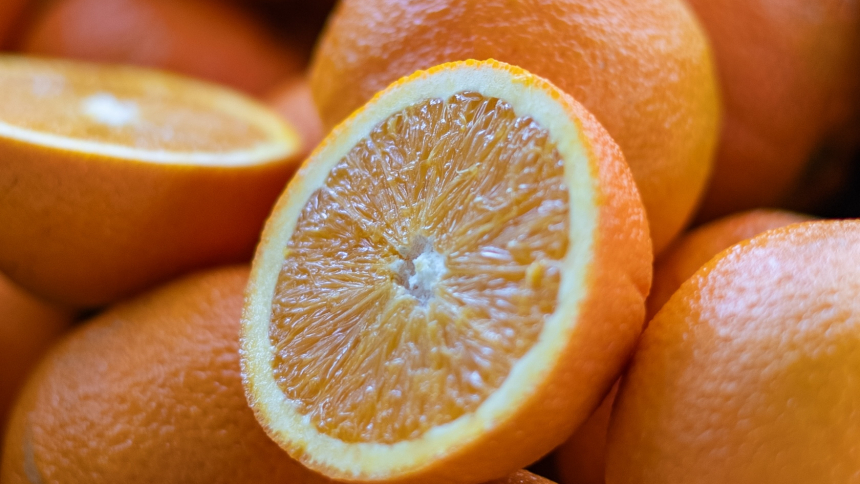
While oranges are picked all year round, they are at their peak in the colder months. There are many different types grown in Western Australia, some of which you won’t have any trouble recognising. But there are also a few lesser-known varieties worth hunting down in your local grocer or supermarket.
While some aren’t grown commercially in volume, you might find one or two to grow in your backyard. Remember, though, they prefer a bit of heat and will struggle in frost-prone areas. They are grown commercially from Harvey and Nannup in the South West, to the Perh Hills and Wheatbelt, as well as into the Mid West and Gascoyne.
Navel oranges
Available throughout winter, navels are our most popular orange. Easy to peel, sweet and delicious, they are also large and generally seedless. Recognisable for the ‘navel’ embedded at the top of the fruit, which is caused by a small secondary fruit, the navel has many variations of its own.
The Washington, the original seedless orange from which all navels were derived, is an early ripener, so it should pop up on shelves by mid May. Imported from Brazil into the United States in the late 1800s, it has spawned navels such as Navelina and Newhall – the two early navels favoured by industry. According to WA Citrus, Rosy Red navels and Cara Cara navels have also become popular with growers.
You might also spot varieties such as Atwood, Autumn Gold, Fisher (or Fischer), Fukumoto, Leng and Ryan.
Valencia oranges
These are the most prevalent of so-called ‘common oranges’, a diverse group of orange that are not pigmented. Most produce some seeds and have a thinner skin than the navel, so aren’t as easy to peel. But they make great half-time snacks sliced into quarters at the netball or footy.
Thought to have originated in Portugal, they are the most extensively grown orange variety in the world, mainly for juices such as Harvey Fresh. While you were generally just find them in shops simply labelled as Valencia, there are many varieties of this orange, too.
The Midknight is known as the “summer orange” because it is available up until Christmas. Wheatbelt producers Moora Citrus describes this beauty as its “pièce de résistance” – virtually seedless and very juicy, it’s bound to become a favourite.
Other ‘common oranges’ are available but tend not to be grown commercially in any quantity due to the dominance of navels and Valencias. They include Hamlin, Parson Brown, Pineapple, Pera and Joppa.
Blood oranges
These have been popping up in the fruit aisle more recently – the Herdsman Market sells beautiful Bindoon blood oranges – but are still not grown in great volumes here.
They are a much darker orange than navels and Valencias (though the Cara Cara and Rosy Red are sometimes confused with blood oranges), with a deep red flesh. While still distinctively citrus, blood oranges also have hints of raspberry. Varieties include Arnold and Tarocco (Ippolito, Rosso and Meli). Herdies reckons they are wonderful in everything from cakes to cocktails.
If you want to try growing one at home, you might find also find Ruby or Maltese varieties at your local nursery. Orange trees favour full sun and well-drained soil.